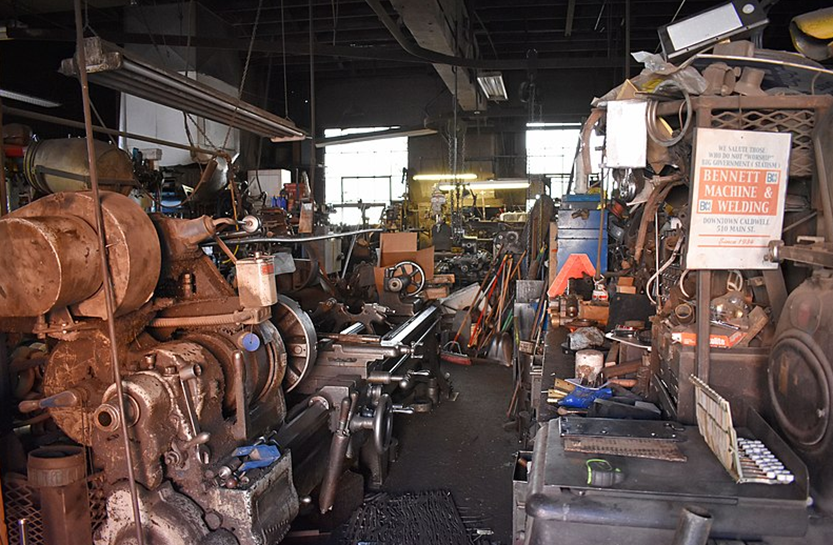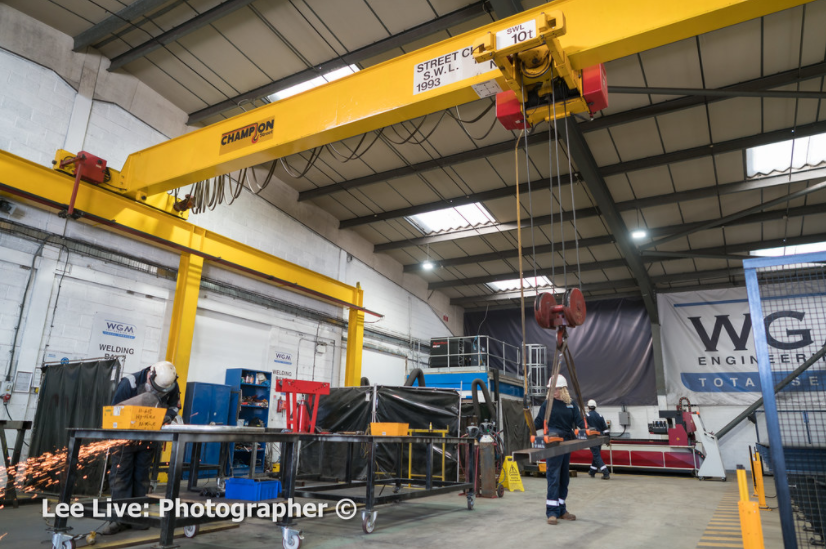2 Worksite Evaluation
Worksite Evaluation…
So, depending on what your “Worksite” normally looks like and the type of work you are doing, you may have a different level of accepted risk or hazards you are working around.
If your normal worksite is in an office building or cubical, you may think having cords on the floor or grinders making sparks and loud noises unacceptable. If you are working in a fabrication shop this is normal and nothing new.
For this section, we will be looking at how to evaluate an industrial, welding-type work area, both in a shop setting and out in the field.
These are a few of the steps I take when walking into a shop or into a fieldwork area to help keep myself and my coworkers safe.
Many times, when you enter a new work area your sense is heightened, and you are aware of many things. Everything in this area is new to you and you probably notice many things. There could also be so many things to notice that you could also miss something very important.
The opposite could also be true when you spend so much time in a work area that you could almost close your eyes, walk around and know right where you are at without tripping on a thing.
If you normally work in a fabrication or welding shop you may soon suffer from a condition called “complacency.” Complacency is one of those things that happens to all of us, and it takes a lot of work and discipline to not fall into the trap of the same old routine. When we do normal routine tasks, work in the same space, work with the same crew of people, use the same tools every day it is easy to get a groove of having our brain set on autopilot.
Something that has kept me safe for over 25 years in the trades is that I follow this small set of rules and I do this every time and no matter where I go. Depending on if it is my first time visiting a worksite, I could dive deeper but my main goal is to try and build a baseline so whenever I return to this area I have something to base my observations on.
W.E.L.L.S. I do this when I first arrive at my own shop or a fieldwork site.
W-Who, who can mean a few different things. If I am visiting a job site, WHO am I supposed to meet? This point of contact is your first line of information needed to know all safety implications of the worksite. If I am a welder and work at the same shop every day the WHO would mean, who is here? Is there anyone I do not recognize? Who is this person? Is this a new coworker? Is this a special contractor onsite to work on a project? Did this person bring anything onsite that could impact my work area? Not that you want to be a nosey person but, if you notice someone out of place, there is a good reason to see how this could impact you and your work.
E-Equipment, no matter if your work takes place in a shop or out in the field, is there any new equipment nearby? This can be any type of equipment used in the trades that are new to the work area. It can be anything, painting equipment, forklifts, cranes, trucks, welders, or cleaning equipment. This observation will lead you to ask some questions about where the work is taking place. Is it near your work, overhead, underneath, will it bring in other hazards to your work area?
L-Look. This is very important, especially when working in the field setting. Many times, work in the metal trades takes place in facilities that are multiple levels with equipment and piping several feet overhead. Always look up before you walk into a building or work site. There can be miles and miles of piping that can be carrying anything from water to acid and caustics and everything in between. Never assume dripping liquid is just water. I always assume it is something that has the potential to be dangerous. You do not need to be paranoid but the first time you assume it is just water, it would be something that will hurt you. It normally only takes a few questions to verify what it is, and this could lead to fixing a potential problem and in turn keeping others safe. If you are working on a job site that has many other tradespeople, things can be changing, and you need to keep your eyes open. Never, ever walk under a suspended load or underneath a crane and lifting work.
L-Listen. Use your ears and listen to anything that seems out of place. Once you really start to listen to the sounds around your work area both in a shop and out in the field, you will be amazed at what you notice. If something sounds out of place, then it probably is. Ask them questions to find out what is causing the noise. It could be a new piece of equipment in use, a failing piece of equipment both of which can introduce hazards to your work area.
S-Speak up. This is not an observational tactic but one of clarification. If something seems to be out of place or unsafe, speak up and verify. We can all fall into the complacency trap and you asking a clarifying question may just help identify an issue that has been missed by others. If you think there is something wrong, you could be right. You speaking up could keep someone from getting injured. It normally only takes a few seconds to ask a question.

A machine shop in Caldwell, Idaho by Tamanoeconomico is licensed under CC BY-SA 4.0

WGMEngineeringFabrications by Lee Live is licensed under CC BY_NC_ND 2.0
As you can see between the two pictures, there can be clean and organized workshops and very dirty unorganized workshops. Sometimes this is a result of the work and sometimes a result of being lazy and not keeping your space orderly. Regardless they both offer dangers.
Once you completed your pre-job assessment of your work area or your WELLS checklist it is time to go to work.
You need to always be aware of the hazards around you, what others are doing and how those actives can impact your safety. You also need to be aware of what the activities you have planned can impact those around your work area. This can differ depending on if your work is in a shop setting or if it is out in the field.
There are many factors and moving parts that go into working safely but if you follow this guideline or checklist it should help you get started in the right direction.
Task-What is your assigned work? Do you fully understand what is needed of you? Are there any clarifying questions you need to ask? Too many times people will not ask the question to avoid looking like they don’t know what they think they should. Trust me, an employer would rather you take a few minutes to fully understand the task rather than just have you do what you think is right. Your assumptions could cost money or could get someone hurt. Swallow your pride and ask.
Tools-Do you have the proper tools, equipment, and PPE to complete this task safely? Is everything you plan on using in good working order? If a tool or PPE is not safe to use, do not use it! There is nothing worth doing that could result in getting yourself or your coworker hurt.
Materials-Do you have the correct material? Is there any special safety or health concerns? You might have to alter your PPE because of the material you are working with or choose different tools. Know the material so you know the tools to use.
Work Area-Is your work area ready for work? No matter where your work area is, make sure it is orderly and ready. Having a clean work area is not only safer but you can also get more work done since everything is where it should be and you spend less time looking for tools and materials.
Many things go into working safely and you will likely have many, many hours of specific safety training over the years but if you can follow these simple steps, it will keep you safe and give you a good head start.
